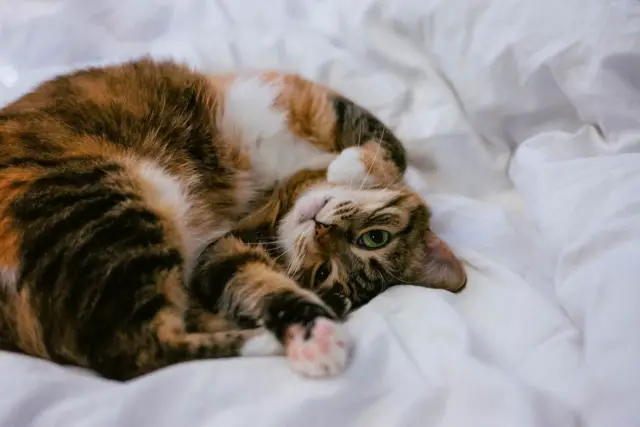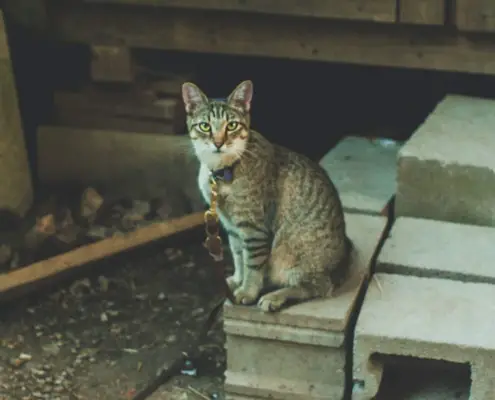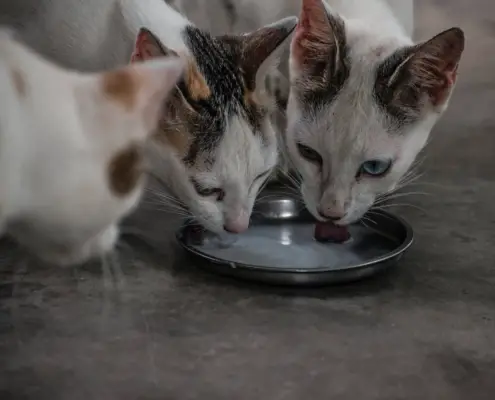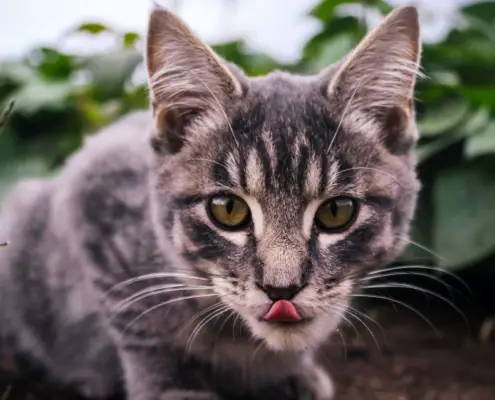
Cats are fascinating creatures with a unique way of communicating. While they may not speak our language, they have their own subtle ways of expressing themselves through body language. Understanding cat body language is essential for any cat owner or enthusiast, as it allows us to better understand our feline companions and strengthen our bond with them.
Being able to interpret cat body language helps us identify their moods, needs, and desires. It allows us to respond appropriately to their cues and provide them with the care and attention they require. By understanding their non-verbal signals, we can prevent misunderstandings and potential conflicts between cats and humans.
Common cat body language signals
Cats communicate through a variety of body language signals. These signals can vary depending on the situation and the individual cat, but there are some common cues that we can learn to recognize.
One of the most important signals is the position of the cat’s tail. A relaxed and upright tail indicates a content and confident cat, while a puffed-up tail suggests fear or aggression. A tail that is tucked between the legs indicates submission or anxiety. By observing the tail position, we can gain insight into a cat’s emotional state.
Tail positions and what they mean
The position and movement of a cat’s tail can convey a wealth of information about their mood and intentions. A tail held high and straight up signifies a happy and confident cat. On the other hand, a tail held low or tucked between the legs indicates fear, anxiety, or submission.
A cat’s tail can also be used as an indicator of aggression. A tail that is puffed up like a bottle brush is a clear sign of aggression and can be accompanied by hissing or growling. If a cat’s tail is twitching rapidly from side to side, it may be a warning sign that they are becoming agitated or irritated.
Ears and eye movements in cat communication
In addition to their tail, cats also use their ears and eyes to communicate. The position and movement of their ears can reveal a lot about their mood. Ears held forward and slightly to the side indicate a relaxed and attentive cat, while ears flattened against the head suggest fear or aggression.
Cats also communicate through their eyes. Wide open eyes with dilated pupils indicate excitement or fear, while narrowed eyes can indicate contentment or aggression. Blinking slowly is a sign of trust and affection in cat language.
Vocalizations and their significance
While cats are not as vocal as dogs, they still use vocalizations to communicate with humans and other cats. Meowing is the most common vocalization and can have different meanings depending on the context. A short and soft meow is often a greeting or a request for attention, while a loud and prolonged meow can be a sign of distress or demand.
Other vocalizations include hissing, growling, purring, and chirping. Hissing and growling are defensive signals indicating fear or aggression, while purring is a sign of contentment and relaxation. Chirping is a unique vocalization that cats use to express excitement or anticipation.
Understanding facial expressions in cats
Just like humans, cats also use their facial expressions to convey their emotions. By observing their facial features, we can gain insight into their current state of mind.
A relaxed and open mouth with slightly squinted eyes indicates a calm and content cat. On the other hand, a tense or closed mouth with wide-open eyes can suggest fear or aggression. The position of their whiskers can also provide valuable information. Whiskers pointed forward show curiosity, while whiskers pulled back against the face indicate fear or anxiety.
Body postures and what they reveal
Cats use their entire body to communicate, not just their tail, ears, and eyes. By paying attention to their overall body posture, we can better understand their intentions and emotions.
A cat that is standing tall with a straight back and raised fur on the back indicates aggression or fear. If a cat is crouching low to the ground with their body pressed against the floor, it is a sign of submission or fear. A relaxed and loose body posture indicates contentment and relaxation.
Cat communication with humans
Cats not only communicate with other cats but also with humans. They have learned to adapt their body language to interact with us and convey their needs and desires.
Some cats may rub against our legs or headbutt us to show affection and mark us as part of their territory. Others may knead their paws on our laps or purr loudly when seeking attention or expressing contentment. By understanding these gestures, we can respond appropriately and strengthen our bond with our feline companions.
Tips for interpreting cat body language
Interpreting cat body language requires careful observation and understanding. Here are some tips to help you decode your cat’s signals:
- Pay attention to their tail positions, as they can provide valuable insights into their emotional state.
- Observe their ears and eye movements to understand their level of alertness and mood.
- Listen to their vocalizations and learn to differentiate between different meows and other sounds.
- Take note of their facial expressions, including the position of their mouth, eyes, and whiskers.
- Consider their overall body posture and any changes in their behavior.
By being attentive to these cues and regularly interacting with your cat, you will become more proficient in understanding their body language.
Strengthening the bond through understanding cat body language
Understanding cat body language is a crucial skill for any cat owner or enthusiast. By learning to decode their non-verbal signals, we can better understand our feline companions and respond to their needs appropriately. This not only helps prevent misunderstandings and conflicts but also strengthens the bond between humans and cats.
So, take the time to observe and learn your cat’s unique body language. Pay attention to their tail positions, ears and eye movements, vocalizations, facial expressions, and body postures. Through patience and practice, you will become more proficient in understanding and communicating with your cat, creating a deeper and more meaningful relationship.
Take the time to observe and learn your cat’s body language today. Strengthen your bond with your feline companion by understanding their unique signals and responding to their needs appropriately.
If you enjoyed my article, I would appreciate you sharing it with your network.

Sima Ndlebe
Sima writes for CatBuzz. He is interested in Cats, Health and Fitness, and Entrepreneurship.
Published: 13 October 2023
Related Articles
Disclaimer
The content found on CatBuzz.org is presented on an "as is" basis and is intended for general consumer information and education purposes only. Any utilization of this information is voluntary and solely at the user's own risk.
None of the articles or content should be regarded as, or used in place of, veterinary medical advice, diagnosis, or treatment. The information provided on the website is purely for educational and informational intentions and should not be considered a substitute for professional guidance from a veterinarian or other qualified expert. The articles are designed to inform consumers about veterinary healthcare and medical matters that may impact their cat's daily life. It should be noted that this website and its services do not constitute the practice of any form of veterinary medical advice, diagnosis, or treatment. CatBuzz.org explicitly disclaims any liability for any direct or indirect damages or losses that may arise from the use of or reliance on the information contained within the content.
Consumers must consult a veterinarian, veterinary specialist, or another qualified veterinary healthcare provider when seeking advice regarding their cat's health or medical conditions. It is important not to ignore, avoid, or postpone seeking medical advice from a veterinarian or other qualified veterinary healthcare provider solely based on information obtained from this website. If you believe that your cat may be experiencing a medical issue or condition, it is imperative to promptly contact a qualified veterinary healthcare professional.



